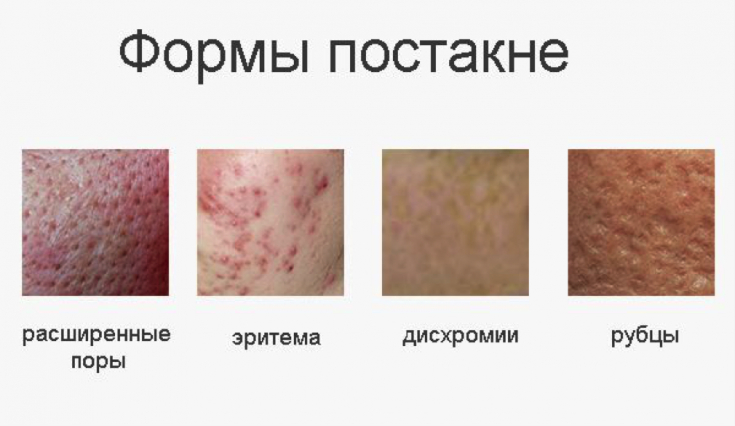Despite the qualities of a person, we first of all pay attention to the face. Adolescents and adults with acne have higher rates of anxiety, low self-esteem and depression compared to those who do not have the problem. Adults with severe skin lesions have a much higher unemployment rate than age-matched non-acne groups. The deterioration in the quality of life in patients with acne equates to disorders in asthma, epilepsy or arthritis.
Find out in the article on estet-portal.com what plays a major role in the process of choosing an acne treatment algorithm.
- approaches to the classification of acne
- risk factors for acne
- approaches to diagnosing acne
- treatment tactics acne
Approaches to the classification of acne
Acne affects all age groups and is classified accordingly into neonatal acne, childhood acne, teenage acne, and adult acne.
Subscribe to our page on Instagram!
The pathogenesis of acne is complex, but includes four key factors with interrelated mechanisms:
1) increased sebum production;
2) hyperkeratinization of the infundibular part of the follicle;
3) inflammation;
4) infection caused by Cutibacterium acnes (gram-positive facultative anaerobes living deep inside the follicles and in the pores of the skin).
Risk factors for acne
Risk factors for acne include: heredity, rare genetic conditions (Apert's syndrome), endocrine disorders, in particular polycystic ovary syndrome (PCOS), metabolic syndrome.
How to provide comprehensive skin care

Acne has a high chance of being inherited − in the general population is the cause of the disease in 81% of cases. Unlike bizygotic twins, monozygotic twins have almost identical levels of sebum production and acne .
Approaches to diagnosing acne
The severity of manifestations is highly variable, ranging from mild to severe fulminant disease with systemic symptoms − fever, arthralgia, lytic bone damage. When collecting an anamnesis, you need to find out if heredity is burdened, pay attention to the symptoms and signs of hyperandrogenism or other endocrine disorders, in particular, excess cortisol and growth hormone.
Beauty from within: nutraceuticals as an important element of beauty
For example, menstrual irregularities and hirsutism are indicative of PCOS, while the sudden onset of acne may be a sign of gonadal tumors.
In patients with atypical, very severe or treatment-resistant manifestations of acne, especially with sudden onset, as well as in women with signs of androgen excess, laboratory and instrumental studies should be performed. In PCOS, it is necessary to determine total and free testosterone in blood serum. If adrenal hyperplasia is suspected, the content of thyrotropin, cortisol, dehydroepiandrosterone sulfate and 17-hydroxyprogesterone is determined.
Treatment tactics for acne
Treatment tactics depend on the type of damage, its severity and localization. First of all, it is necessary to analyze the skin care routine: the frequency of washing, the choice of products for cleaning and moisturizing. Most patients are advised to avoid scrubs, astringents, and other irritating products, and to wash twice a day using gentle cleansers for sensitive skin.

Typically, irritation due to the use of topical acne medications peaks after about 2 weeks and then gradually decreases. To mask the manifestation of acne, you can use cosmetics for make-up, which indicate "non-comedogenic", "oil-free"; or "doesn't clog pores." For sensitive skin, moisturizers help minimize irritation.
How can vitamin C increase collagen synthesis and eliminate hyperpigmentation?
The patient should understand that the initial period before clinical improvement is sometimes 8-12 weeks, and secondary pigmentary changes or erythema completely disappear after a few months. To prevent further darkening of hyperpigmentation, it is advisable to use sunscreen. Although there are currently no clear dietary guidelines for acne patients, there is evidence of a higher incidence of lesions with increased consumption of simple carbohydrates, especially in those with insulin resistance.
Thus, lowering glycemic load in combination with metformin therapy in the study resulted in reduction in acne compared to no dietary change or metformin alone. The acne treatment algorithm primarily includes local and / or systemic combination therapy, which includes antibacterial agents, retinoids, and, if necessary, the use of antibiotics.
More useful information on our channel in Youtube:









Add a comment